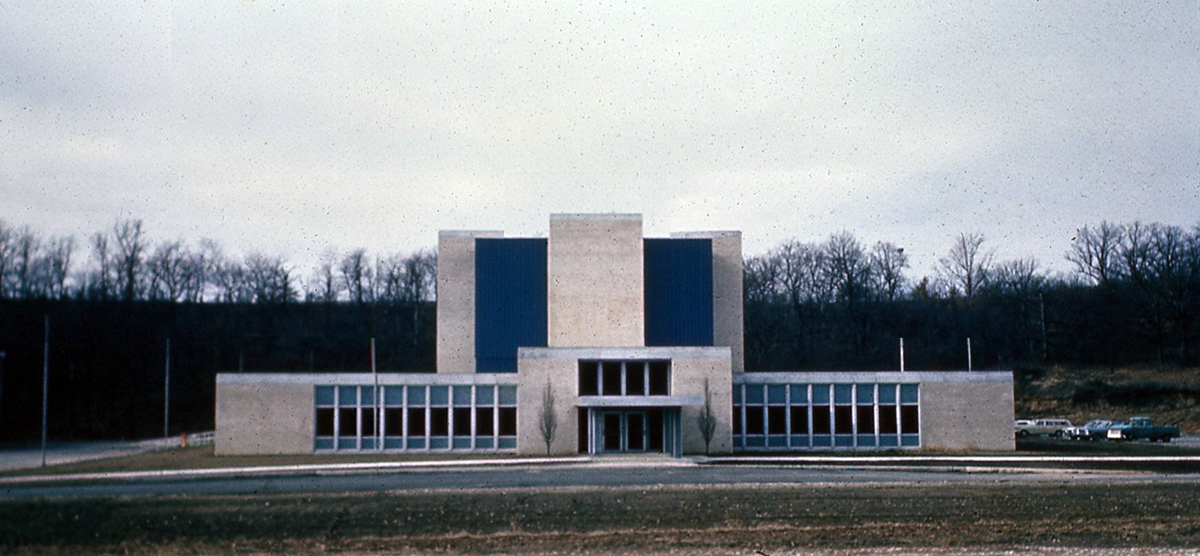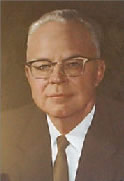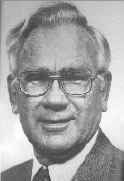
“To the making of these fateful decisions, the United States pledges before you — and therefore before the world its determination to help solve the fearful atomic dilemma — to devote its entire heart and mind to find the way by which the miraculous inventiveness of man shall not be dedicated to his death, but consecrated to his life.”
— Dwight D. Eisenhower, Dec. 8, 1953
Elmer Ellis

In 1955, the University of Missouri embraced the vision of President Dwight D. Eisenhower when he declared to the world the mission to find a peaceful use of the atom and University of Missouri President Elmer Ellis appointed a committee to evaluate how a research reactor might stimulate greater scientific research at this land-grant institution.
Encouraged by Huber O. Croft, dean of the College of Engineering, the university sought to inspire peacetime scientific research on nuclear energy for electric power generation – and on its products for industrial and medical application.
The committee that President Ellis appointed spent several months surveying faculty at the university as well as at the Missouri School of Mines in Rolla (now Missouri University of Science and Technology) for their input and insights. Together they estimated costs and possibilities, met with federal and state agencies, and compiled a study document that was in overwhelming support of such an innovative undertaking.
In a Feb. 3, 1959, press release, Ellis said, “New vistas of a nuclear age have touched every field of science, from agriculture to medicine, from geology to zoology, and from engineering to veterinary science, in addition to the important discoveries being made in chemistry and physics. All those fields are a part of the University of Missouri’s educational responsibilities to our youth and to all our citizens. We have to move forward with the nuclear age, lest we fall hopelessly behind.”
Others outside the university shared Ellis’ vision. In June 1959, Missouri Governor James T. Blair signed an appropriations bill to fund the project after it had been passed by the Legislature, for an amount later supplemented under Governor John M. Dalton’s tenure, the man who succeeded Blair as Missouri’s governor.
The Atomic Energy Commission issued a construction permit for the university’s reactor on Nov. 21, 1961. Ellis and his team continued to show vision in hiring a director who chose a flexible reactor design that has allowed expansion and upgrades to accommodate increasing research needs and technological advancements.
Ardath Emmons

To lead the new project, the university hired Ardath Emmons, the supervisor of the Ford nuclear reactor and Phoenix Memorial Lab at the University of Michigan, in 1959.
With state allocations totaling $3.4 million, construction on MURR began in 1963 and was completed in 1966. Built on a former polo field, nestled against a tree-covered limestone ridge in what is now the University of Missouri’s research park, MURR’s flux-trap-type reactor has been highly regarded as a primary research source almost since its birth.
At 6:14 p.m., Oct. 13, 1966, the University of Missouri Research Reactor achieved criticality and became operational. Originally licensed to operate at 5 MW in its inaugural year of 1966, the reactor was upgraded to 10 MW in 1974.
Its total-time/integrated power running schedule and enviable operating record have made this reactor not only the largest and most unique facility of its kind in the United States, but it an essential resource for researchers, scientists, engineers, students and industry partners.
MURR currently supports the research of hundreds of faculty and students each year in dozens of disciplines and provides lifesaving products and services that directly benefit the citizens of Missouri, as well as others in universities, industries and agencies worldwide.
Elmer Ellis may not have known just how global his vision was, but hindsight confirms it. The state of Missouri mined a jewel in the University of Missouri Research Reactor.